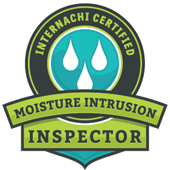Condo Inspection

Having your purchase agreement accepted by a seller starts a wave of activity that must be accomplished before you can close escrow on your new condominium. A home inspection is a major contingency and it’s your responsibility to hire a licensed home inspector to go over the entire property and give you a detailed description of the unit, its operating systems and the building. The walls you share with neighbors, your floors, ceilings and internal systems are your responsibility and you must be sure they are in good order.
Consult the Condo Documents
Research minutes of the condominium meetings for the past 12 months looking for signs of exterior or maintenance problems. Ask to see proof of major structural costs, the fees incurred and the repairs made. Look at the common areas to determine if maintenance has been performed. Poor maintenance usually indicates a lack of funds.
Heating and Air Conditioning
Do you have your own heating and air conditioning unit or is it part of a central system? Have both inspected to determine the condition of the unit(s). Have the filters been changed and are the ducts cleaned? Ask the current owner for a detailed list of “running costs” for the unit, both in summer and winter. The inspector will check the electrical panel to see if all breakers are working. Toilets and sinks are tested for proper drainage.
Appliances and Electrical Outlets
The licensed building inspector will test all appliances within the unit to see that they are in good working order and that none have been recalled by the manufacturer. He’ll also check the electrical outlets to ensure they all work and examine the placement and working order of GFCIs, or ground fault circuit interrupters. Smoke detectors in all rooms are checked as well.
Windows and Doors
Windows must seal when closed, preventing air from both entering and leaving the unit. The door needs to be hung low enough to prevent air from coming in from the outside or the hallway. The doorbell is tested.
Ceilings and Floors
A check is made for any staining on the ceilings that indicate leaking plumbing from above. The space between the baseboards and floors is measured to determine the durability of the flooring. Loose tiles are noted as is loose carpeting, which may be caused by previous flooding.





